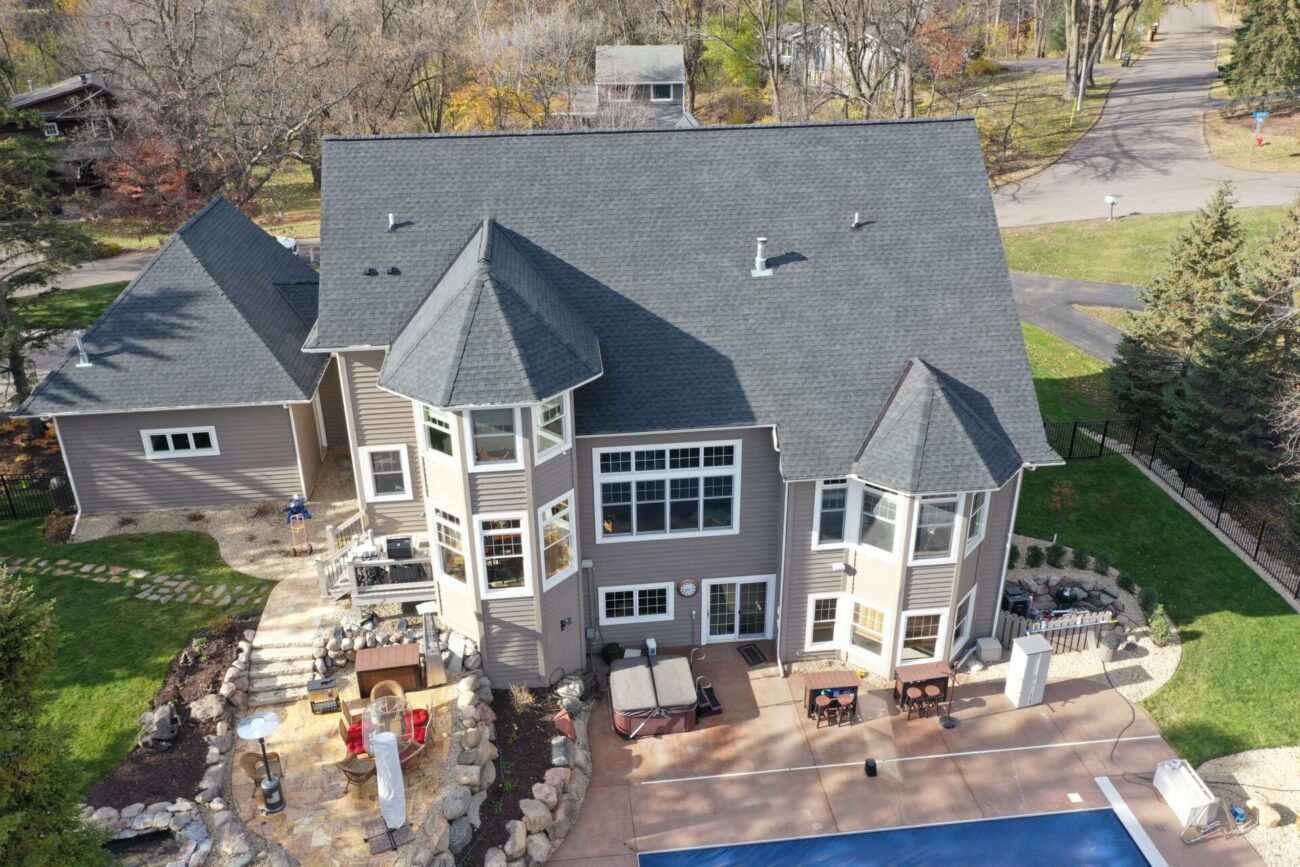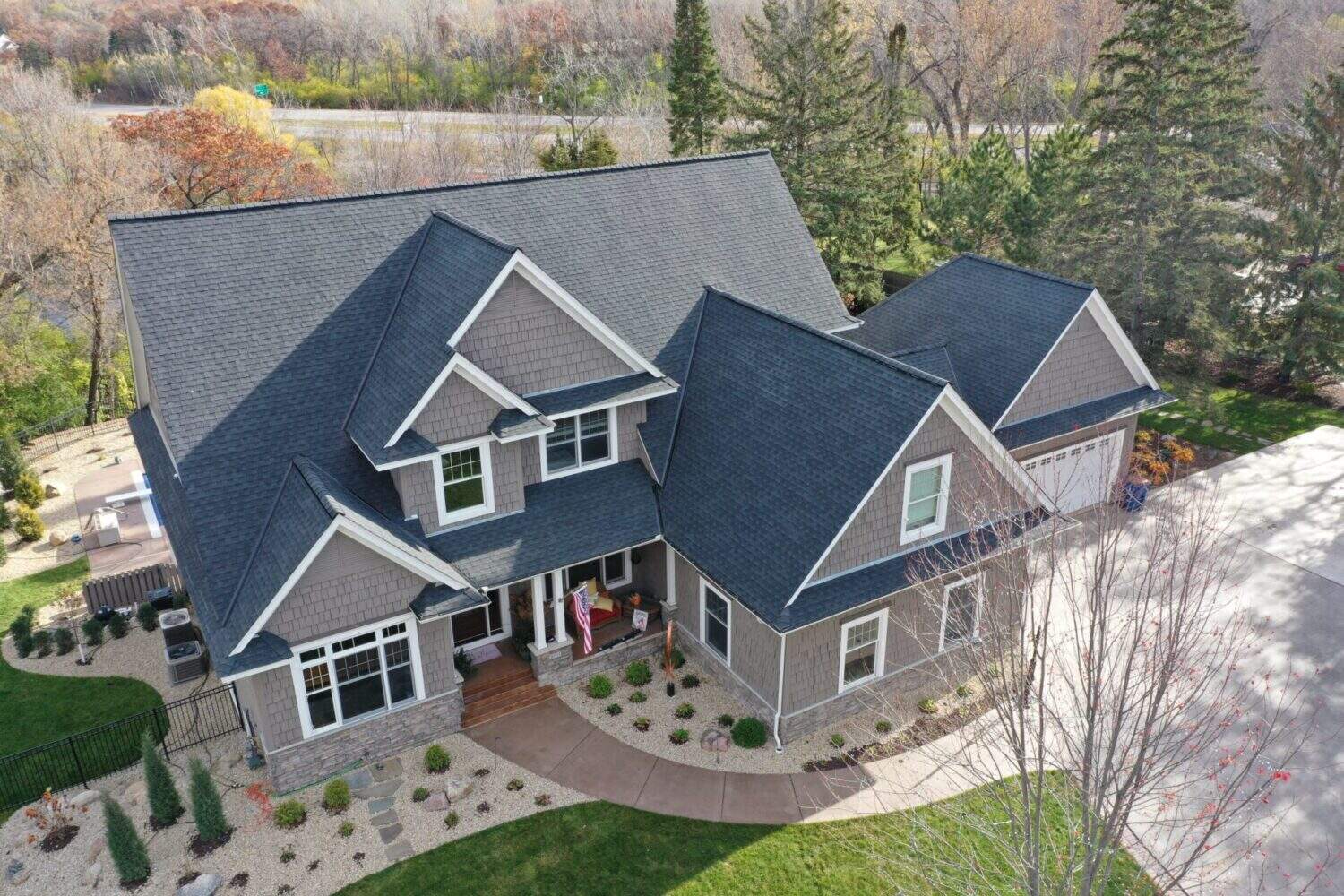Keeping roofs over our heads is one of the most basic necessities we have as humans. Doing a great job on them is more important than other general exterior construction projects. Roofs protect us and everything we own from the elements. With everything roofs do to protect our ways of life, it’s important to keep them in great condition. That means choosing the right types for our homes and businesses and replacing them when they no longer function correctly.
If you’re in the market for a new roof, you may have come across a couple of different options. New construction roofing and roof replacement are terms you’ll see on contractor websites, but they are quite different. Here’s what sets them apart.
What is a Roof Replacement?
If you need new shingles and underlayment for your home or business, you’re looking for a roof replacement. For a roof replacement, contractors install a new roof on an existing structure. This means removing and replacing all old or damaged materials. Depending on how many obstacles you’ve got, the process can be easier or harder. Roofers will have to work around them. This makes roof replacements a little more tricky and a little more spendy than new construction roofing.
What is New Construction Roofing?
New construction roofing is fairly straightforward. It means the entire structure will be built from scratch. Instead of stripping and replacing old materials on existing structures, contractors build a roof on a new structure. This means you can choose any design and materials that you’d like. New construction sites are usually free from obstacles, which means a new construction roof costs a little less.
Important Factors in Choosing Materials for Your New Construction Roofing
Nowadays, there are lots of available options in roofing styles and materials. The type you ultimately choose will come down to your personal style and the place you live. Let’s look at some of the things that will affect your roof construction style and materials.
Where do you Live?
The place you live plays a big part in dictating the types of roofs that will work for your particular project. Some styles may work better in hot southern states but less well in cold northern states. What works in Louisiana may not work in Minnesota. Also, the new roof cost in Minnesota may differ from that of Louisiana due to differing weather conditions.
Consider Energy Efficiency
The type of roofing material you choose for your property can significantly affect energy efficiency. For example, choosing light and reflective colors for your new construction roofing materials can lower your roof’s temperature. This can extend the life of your roof and allow you to cool your house more effectively during the hot summer months.
For those in northern climates, the opposite may be true. Darker colors make it easier to heat homes during cold winter months. It can also help melt snow more effectively, reducing the chances of too much weight building up throughout the season.

default
Choosing Your Roofing Materials
The type of roofing materials we choose are partly based on form and partly based on function. We need something that looks great and preferably something that performs even better. Also, some are heavier than others. This can make them better choices for new construction roofing than roof replacements if structures aren’t up to par. Let’s look at some of the best roofing and construction materials on the market, as well as what each offers.
Asphalt Shingles
This is the most common type of roofing material used in residential homes in the United States. Asphalt shingles are a low cost solution that doesn’t weigh the structure down. They are also available in all kinds of colors and can fit any color scheme.
On the downside, they have a relatively short lifespan and the quality can vary. Get the best if you want them to last. They also don’t install well in winter, so if you need a roof urgently, don’t hold off. Plain black asphalt shingles can also make your home look like all the others on the block. If you really want to set your home apart, going with other colors or materials can be a great way to do that.
Clay or Concrete Tiles
Another type of tile that’s popular in the US is the type that’s made of clay or concrete. They are energy efficient and don’t burn, making them a great choice in fire prone regions. That said, they can be expensive to install.
Since they can be very heavy, you’ll need reliable roofing and construction professionals to install them safely. Pros will know whether the foundation is strong enough to support them before installation begins. They also know how to install them correctly, meaning you’ll reap all the benefits they offer. They can last 40-50 years, so that extra cost can be spread out over the next half decade or so.
Slate Tiles
If you’re looking for more of a residential luxury roofing solution, slate tiles fit the bill perfectly. They are elegant, fire resistant, and recyclable, so they are great for just about any look you’re going for. They aren’t suitable for all applications, however.
Slate tiles can be quite heavy, and you may not be able to install them on the existing framework. They are more of a new construction roofing solution than a roof replacement one if the structure lacks strength. This is another tile type with a long lifespan, so the cost can be spread widely across your yearly budget.
Wood Shingles
One of the original roofing materials is the wood shingle. They’ve been a popular choice forever, and people love the weathered look they take on after a few years. That makes them a great creative exteriors construction material. Depending on the wood species, you may even get a lifetime of service out of them. The wood species also dictates price, which can get very high. Keep that in mind when making your selection.
Unfortunately, wood shingles are incredibly combustible, and are prohibited in some regions. They also won’t last forever in certain climates since they are made of organic materials. They will usually last longer than asphalt but not as long as slate. This makes them a great middle-of-the-road option when it comes to longevity.
Metal Roofing
Another roofing material that will net you a fairly long life is metal. You can choose between panels and shingles, and they are a great option if you’ve got a rain barrel below. They are surprisingly lightweight, so you can probably even use them for a roof replacement. No need to replace the foundation below.
On the downside, they can be fairly expensive to install. You’ll need to hire expert roofing and construction pros to do it. However, if you deal with a lot of extreme weather in your region, that may be money well spent. Metal is extremely durable and holds up well to all kinds of weather.
Pitched Roof vs Flat Roof
One of the decisions you’ll have to make is whether to go with a pitched roof or a flat roof. Both types of roof construction have advantages and disadvantages.
Flat Roofs
The term flat roof is a little misleading. In reality, flat roofs may appear completely flat, but they do have a slight pitch. This allows them to drain water and prevent rainwater from pooling. It delivers a modern look at affordable prices.
Going flat means different roof construction details and possibly higher costs of design and installation in some regions. Flat roofs allow us to place things like air conditioning units and solar panels on them easily, saving yard space. However, a flat roof may not be suitable for homes in all climates.
Pitched Roofs
If you live in a region where adequate drainage is important, a pitched roof may be a better bet. Pitched roofs allow rain and snow to run off more easily. This prevents pooling and reduces the chances you’ll deal with water damage down the road.
A pitched roof does require a more sturdy foundation. If you don’t have the best roofing construction on your home, you’ll require additional materials for a conversion. In new construction roofing, it shouldn’t be an issue.
Choose the Right Season for Installation
The best time of year for both replacement roofs and new construction roofing is the warmer months—specifically spring through fall. The warmer temps, longer days, and lack of hazardous ice make it an ideal time for exterior construction. But that doesn’t make it the only time to install a new roof.
No matter the time of year, you should be aware of the condition of your roof. If you have any leaks, installing a new roof ASAP will save you big money by avoiding water damage. Keep in mind, though, that asphalt shingles don’t install well in winter. If that’s the material you want to use, try to get it replaced before the snow flies. If you discover a leak in winter and want asphalt shingles, reach out for help determining the best solution.
Use a Great Contractor
When it comes to the world of construction, roofing is not an area where you want to cut corners. Simply searching “roofing and construction near me” won’t always deliver the best results. We can always hire the cheapest company in town to replace our roofs or install new construction roofing. Unfortunately, that’s not always the best way to go. Your new roof will only be as good as the company that installs it.
Going with the best quality roofing and construction professionals may cost slightly more, but you’ll get a higher quality product. That higher quality can translate into energy savings and longer roof life.
To learn more about the residential roofing in Minnesota options available to you, reach out to our team. We’re a leading firm for new roof installation in Minnesota and can replace your old roof in no time.

